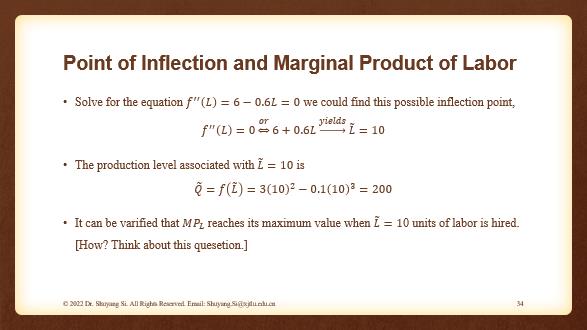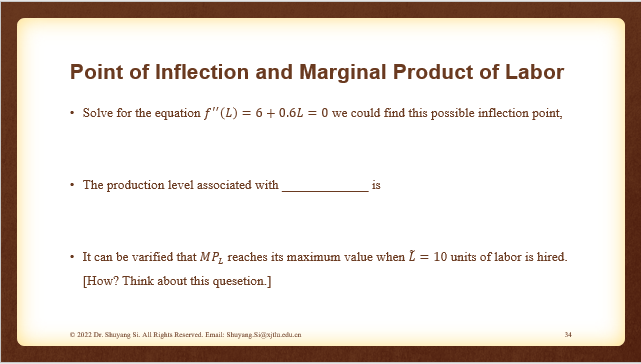
Live Online Lectures with Guided Notes

The pandemic situation in Suzhou forced all lectures to be delivered online in Semester 2, AY2021-22 at XJTLU, during which I was responsible for teaching the second half of ECO 118. All instructors at XJTLU had two options to deliver lectures, online recorded lectures or live lectures. To make the online teaching environment consistent with that on-site and give students a better online learning experience, I’ve decided to host live online lectures via Zhumu. Unlike recorded lectures, live online lectures give students a better online learning experience as the live online lectures are only available for a fixed schedule, and it has similarities with the on-site teaching and learning environment by allowing real-time interactions between instructors and students. As for instructors, I also find live online teaching is more efficient and time-saving compared to recorded lectures. All my live online lectures were recorded and can be easily shared with students via Mediasite in case they missed a certain live lecture.
As a mathematics course, ECO 118 requires a massive amount of derivation steps while demonstrating how to prove theorems or solve mathematic problems. In an onsite in-person teaching environment, it is typical that we use lecture slides and display the derivation steps one by one using multiple slides and carefully go through each of the slides/steps with students. However, I have concern that this method may be inefficient given that we were in an online teaching mode and students’ attention can be lost easily during a live online lecture. Another obvious inferior option is to show all the steps at once in one sum-up slide, which have been abandoned by many instructors long ago.
When designing the ECO 118 live online teaching materials, the first thing that showed up in my mind was to use the fill-in-blanks guided lecture notes and ask my students to write down their notes along with me during the lectures. Note-taking is the key step for memorizing and learning, and it has been proven to be effective by both anecdotal evidence and previous studies. As an old Chinese proverb goes, the palest ink is better than the best memory (广记不如淡墨). I find note-taking is quite powerful in learning from my experience when I was a student. Back when I was in my undergraduate studies, Prof. James Ealse from Purdue University was using guided notes in his lectures. In the later years of my studies, I also met other professors using guided notes in teaching at the University of California, Davis, and Cornell University. Whenever I open the guided lecture notes from these courses with my handwritten notes, those handwritten notes are still fresh to me for all the key points and derivation steps were all written by me rather than given to me in a typed full-text lecture slide.
The guided notes are ‘incomplete’ lecture handouts. They contain only the essential background information and key bullet points with spaces and blanks that need to be filled in to obtain the full lecture notes. The examples below are the same lecture slides in the second part of ECO 118 (Lecture 9, Point of Inflection and Marginal Product of Labor). One of them is the Full-text Lecture Slide version (Example 1) and the other is the Guided Lecture Notes version with blanks (Example 2). As demonstrated by the examples, the guided notes version of the slide includes the setup of the problems & key bullet points but excludes the derivation & problem-solving steps. The guided notes are designed to (1) help students prepare for lectures by guiding them through the related reading materials & textbook chapters and (2) to grasp students’ attention during the lectures. This delivery method goes far beyond the fast-food-style slide reading teaching. It mimics and optimizes the traditional note-taking learning mode, as it reduces students' time spent on note-taking by providing the basic structure of the lecture notes and in turn allows students to better focus on the lecture materials. It has been proven to be more effective than 100% full-text lecture slides (Neef, McCord & Ferreri, 2006), more effective than 100% handwritten notes with no lecture slides teaching style (Feudel & Panse, 2022), etc.
Example 1. Full-text Lecture Slides

Example 2. Guided Lecture Notes

To successfully deliver the online lectures using guided notes, I’ve used Notability for teaching. Notability is a virtual notepad application for IOS devices, which allows users to share PDF files and writings in real-time via online broadcasting platforms, such as Zhumu (or other virtual meeting software), and write directly on the documents they share. For non-iOS devices, similar virtual notepad Apps should exist. With the help of these virtual notepad Apps, instructors can write their notes with different colors and line styles, and easily draw straight lines, etc., just like writing on a blackboard with chalk.
The guided notes were given to students at least 2 days in advance of the scheduled live online lecture. Students were expected to read and understand the guided notes and the structure of the upcoming lecture. Students were also expected to read the related textbook chapters with the help of guided notes. The design of the ‘blanks’ used in the guided notes was done by removing the key points or key derivation steps from the full-text lecture notes, therefore the students receive just the right amount of information to understand the structure of the upcoming lecture and can guide themselves through the textbook chapters through self-learning (if they are willing to) before the lectures.
During the live lectures hosted via Zhumu, I’ll share my iPad screen and write on the guided notes with Notability instead of displaying the full-text lecture notes. While I do have a hard copy of the full-text lecture notes next to me as my teaching notes during the live online lectures. All blanks were filled in during the live online lectures, and students can write down their notes and fill in the blanks along with me when I’m proving a theorem or solving a mathematic problem in real-time.
Example 3. My Handwritten Notes on Guided Notes during Live Lectures

Anecdotal evidence and previous studies suggest that students’ participation rate and student engagement are hard to maintain during online teaching.
To resolve the participation rate issue and to prevent students from rote learning by memorizing slides, I never publish the complete full-text lecture notes or my handwritten lecture notes on the course page of ECO 118 on Learning Mall. As a result of the above measures, approximately 300 out of 550 students regularly attend the weekly live lectures. Students who missed the live lectures or those who decided not to participate in the live lectures do have a chance to watch the live lecture recording through the Mediasite to learn from recorded lectures and make up their notes.
To resolve the student engagement issue, all students were encouraged to meet with me during my weekly office hours, or meet with my two excellent teaching assistants during their TA Engagement times (which are the originally scheduled tutorial times covered by TAs). As most students enrolled in this module were Year 2 students, some of them still have difficulties following full-English lectures in real-time. I have been carefully communicating with students to hear their feedback both after the live lectures and during my office hours. Students expressed their concerns such that they cannot fully follow my writing speed on Notability during the live lectures. The same issue has been identified in previous studies that inappropriate blank choices may negatively impact students' learning (Feudel & Panse, 2022). Consequently, the number of blanks in later lectures was reduced significantly to allow the students to better focus on learning the lecture materials instead of being fully devoted to note-taking.
The pandemic and online/hybrid teaching have changed many things, especially those related to our educators. Teaching has become a relatively more challenging task when it comes to achieving teaching outcomes, maintaining students’ participation rate, and engaging with students during the online/hybrid teaching period. I do believe there are many innovative ways we can use to facilitate students' learning and better achieve teaching outcomes, including but not limited to the live online lecture with guided notes mentioned in this article. As a young professional, I’m still in the early stage of my teaching career, and I’ll keep exploring other opportunities and seeking help from experienced educators to improve my teaching and teaching skills.